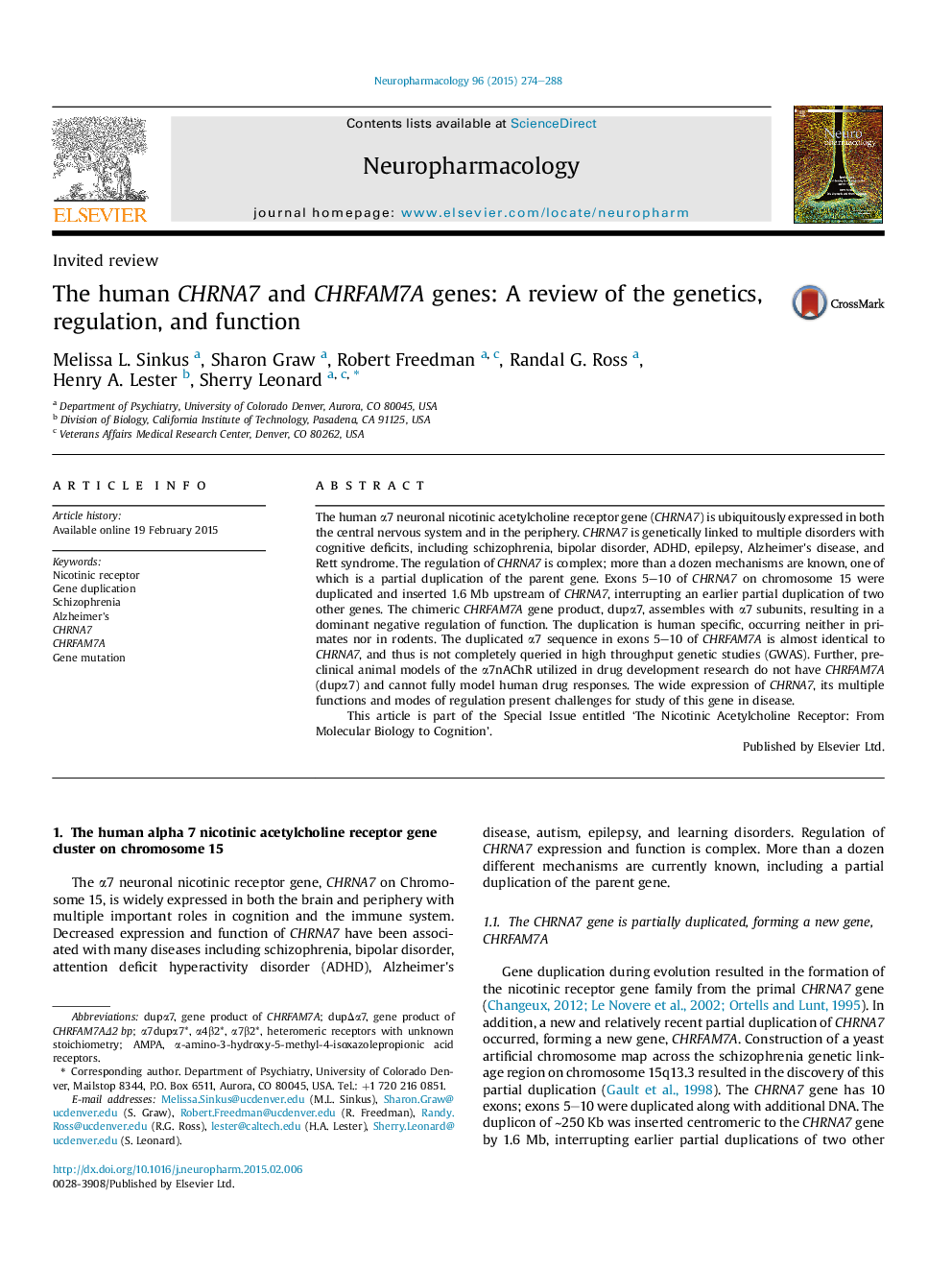| کد مقاله | کد نشریه | سال انتشار | مقاله انگلیسی | نسخه تمام متن |
|---|---|---|---|---|
| 2493163 | 1115474 | 2015 | 15 صفحه PDF | دانلود رایگان |

• The α7 nicotinic receptor gene, CHRNA7, is associated with many mental illnesses.
• CHRNA7 on chromosome 15 was partially duplicated forming a new gene, CHRFAM7A.
• The gene product of CHRFAM7A, dupα7, assembles with α7 subunits (α7dupα7*).
• Dupα7 is a dominant negative regulator of α7nAChR function.
• CHRFAM7A is not present in either rodents or primates, only in humans.
The human α7 neuronal nicotinic acetylcholine receptor gene (CHRNA7) is ubiquitously expressed in both the central nervous system and in the periphery. CHRNA7 is genetically linked to multiple disorders with cognitive deficits, including schizophrenia, bipolar disorder, ADHD, epilepsy, Alzheimer's disease, and Rett syndrome. The regulation of CHRNA7 is complex; more than a dozen mechanisms are known, one of which is a partial duplication of the parent gene. Exons 5–10 of CHRNA7 on chromosome 15 were duplicated and inserted 1.6 Mb upstream of CHRNA7, interrupting an earlier partial duplication of two other genes. The chimeric CHRFAM7A gene product, dupα7, assembles with α7 subunits, resulting in a dominant negative regulation of function. The duplication is human specific, occurring neither in primates nor in rodents. The duplicated α7 sequence in exons 5–10 of CHRFAM7A is almost identical to CHRNA7, and thus is not completely queried in high throughput genetic studies (GWAS). Further, pre-clinical animal models of the α7nAChR utilized in drug development research do not have CHRFAM7A (dupα7) and cannot fully model human drug responses. The wide expression of CHRNA7, its multiple functions and modes of regulation present challenges for study of this gene in disease.This article is part of the Special Issue entitled ‘The Nicotinic Acetylcholine Receptor: From Molecular Biology to Cognition’.
The human α7 nicotinic receptor gene, CHRNA7, is partially duplicated, forming a new gene, CHRFAM7A (A). The gene product, dupα7 (C), assembles with α7 (B) subunits. The α7dupα7* receptor has fewer binding sites (D), and is a potent dominant negative regulator of α7nAChR function. CHRFAM7A is not found in either rodents or primates, resulting in important implications for neuropsychiatric genetics and drug development.Figure optionsDownload as PowerPoint slide
Journal: Neuropharmacology - Volume 96, Part B, September 2015, Pages 274–288